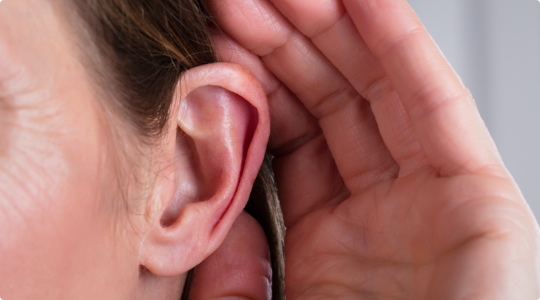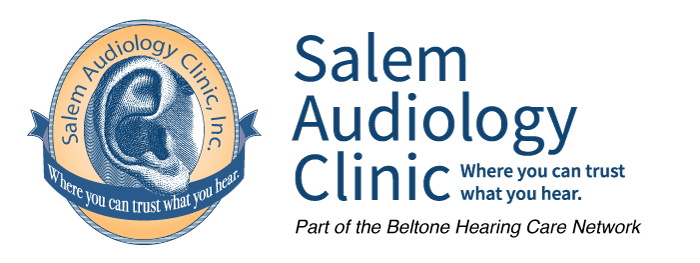Services
We offer services and treatment plans tailored to meet your unique hearing needs. From comprehensive evaluations to custom hearing aid fittings, our staff combines years of experience with state-of-the-art technology to find the best solution for you.
Hearing Tests
Hearing Testing and Evaluations
Choosing the right hearing aid starts with a clear understanding of your unique hearing loss needs. Our advanced testing procedures accurately identify whether or not you have hearing loss and measure the type and severity.
A Diagnostic Audiologic Evaluation is a series of tests that determine if you have hearing loss, and if so, to what extent. The tests are chosen based on your age, symptoms and medical history, allowing your provider to tailor a treatment plan for your specific needs.
More on Diagnostic Audiologic Evaluation
Online Hearing Screening
Think You Might Have Hearing Loss?
Take our free, 5-minute online screening to get a better understanding of your hearing health. It can determine if a professional screening is right for you.
Our Process
Finding the Perfect Match.
Hearing loss looks different for everyone, and as a result, there are a number of hearing aid varieties on the market. Through careful evaluations and custom fittings, we’ll help you find the best device for your hearing loss needs.
Step 1.
Come In and We’ll Test Your Hearing
One of our experienced hearing professionals will test your hearing and determine if hearing aids are the best solution for you.
Step 2.
Get Matched With the Right Device
Based on your unique hearing loss, our professionals will pair you with the best hearing aid to fit your needs, lifestyle, and budget.
Step 3.
Customize and Optimize Your Device
To ensure you’re getting the most from your new hearing aids, we’ll test your new device and make adjustments as needed for the perfect fit.
Step 4.
Check-in Regularly For Ongoing Care
Better hearing is a process, and we’re with you through every step of your journey with regular cleanings, maintenance and follow-up care.
Hearing Aid Services
We Service Your Devices
From hearing aid screening, selection and fittings, to ongoing maintenance and repairs – we offer a wide range of services to keep your hearing aids performing their best.
These evaluations determine if hearing aids are the best course of action for your hearing journey. If so, your provider will help you choose the best hearing aid style and features based on your level of hearing loss, lifestyle, and budget.
More on Evaluation for Hearing AidsOnce you’ve chosen hearing aids, the next step is to get them fitted and working just right. Your provider will walk you through proper care and maintenance, as well as make adjustments to ensure you’re getting the most from your new device.
More on Hearing Aid Dispensing & FittingLess than 30% of hearing care providers use Real-Ear Measures (R.E.M.). However, at Salem Audiology, we use it 100% of the time. Why? R.E.M. allows the audiologist to verify that hearing aids are amplifying sound correctly for a specific patient’s hearing loss. It takes the “guesswork” out of the prescription process. When using R.E.M, the…
More on Real-Ear MeasurementsWe know how important your hearing aids are to your quality of life. That’s why it’s important to stay up to date on servicing and repairing when needed. Hearing Aid Maintenance There are a few steps you can take at home to help prolong the life of your hearing aids. Keeping your hearing aids in…
More on Service & Repair
